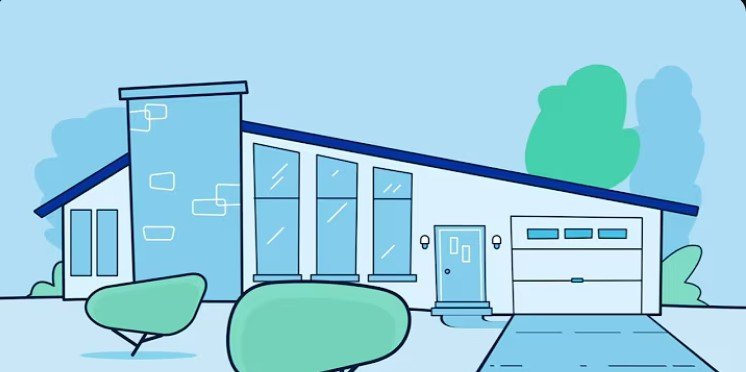Introduction
Home is where the heart is—but it’s also where you invest a significant portion of your finances. Whether you’re a first-time homeowner or a seasoned property investor, having reliable home insurance is not just a safety net—it’s a necessity. From natural disasters to accidental damages and theft, home insurance protects one of your most valuable assets from unforeseen events.
In this in-depth guide, we’ll explore everything you need to know about home insurance, including its types, benefits, what’s covered and not covered, how to file a claim, tips to reduce premiums, and how to choose the best insurance provider in 2025.
Table of Contents
- What is Home Insurance?
- Why Home Insurance is Essential
- Types of Home Insurance Policies
- What Does Home Insurance Cover?
- What Home Insurance Typically Does NOT Cover
- How Home Insurance Works
- Home Insurance vs. Mortgage Insurance
- Factors That Affect Home Insurance Premiums
- How to Choose the Right Home Insurance
- Tips to Lower Your Home Insurance Cost
- Filing a Home Insurance Claim: Step-by-Step
- Common Myths About Home Insurance
- Home Insurance for Renters and Landlords
- Natural Disasters and Home Insurance
- Best Home Insurance Companies in 2025
- Frequently Asked Questions
- Conclusion
1. What is Home Insurance?
Home insurance, also known as homeowner’s insurance, is a form of property insurance that provides coverage for your home, its contents, and sometimes even people living in the home. It protects against damage caused by fire, theft, storms, and other disasters, as well as liability for accidents that occur on your property.
2. Why Home Insurance is Essential
Owning a home is one of the most significant financial commitments a person can make. Without insurance, you risk:
- Losing your investment due to fire, floods, or other disasters
- Bearing out-of-pocket costs for repairs or rebuilding
- Facing lawsuits if someone is injured on your property
- Being denied a mortgage or home loan (lenders require insurance)
Home insurance provides peace of mind and financial protection, ensuring that you can recover from potential losses without suffering major setbacks.
3. Types of Home Insurance Policies
There are several types of home insurance policies, each offering varying levels of protection. In the U.S., these are commonly referred to by “HO” designations:
HO-1: Basic Form
- Covers limited perils like fire, theft, and vandalism
- Rarely used today due to minimal protection
HO-2: Broad Form
- Adds coverage for more perils such as falling objects or weight of snow
- Better than HO-1 but still limited
HO-3: Special Form (Most Common)
- Offers all-risk coverage on the dwelling
- Named-peril coverage for personal property
- Excludes specific risks like floods and earthquakes
HO-4: Renters Insurance
- Designed for tenants
- Covers personal property and liability
- Does not cover the structure
HO-5: Comprehensive Form
- Highest level of protection
- Open-peril coverage for both dwelling and personal property
HO-6: Condo Insurance
- Tailored for condominium owners
- Covers interior structures and personal property
HO-7: Mobile Home Insurance
- Similar to HO-3 but for mobile or manufactured homes
HO-8: Older Home Insurance
- Designed for older homes where replacement cost may exceed market value
4. What Does Home Insurance Cover?
A standard home insurance policy typically covers the following:
1. Dwelling Coverage
- Covers the structure of your home (roof, walls, floors, etc.)
- Includes built-in appliances and permanently attached fixtures
2. Other Structures
- Covers garages, sheds, fences, and other detached structures
3. Personal Property
- Covers furniture, electronics, clothing, and other belongings
- Typically up to 50–70% of your dwelling coverage
4. Loss of Use (Additional Living Expenses)
- Pays for temporary living expenses if your home is uninhabitable
- Includes hotel stays, meals, and transportation
5. Personal Liability
- Covers legal expenses if someone is injured on your property
- Includes medical bills, court costs, and settlements
6. Medical Payments to Others
- Covers minor injuries to guests on your property
- Does not require you to be legally liable
5. What Home Insurance Typically Does NOT Cover
It’s crucial to understand the exclusions in your policy. Most standard policies do not cover:
- Floods (requires separate flood insurance)
- Earthquakes (needs additional coverage)
- Pest infestations (termites, rodents)
- Mold damage (unless caused by a covered peril)
- Wear and tear or poor maintenance
- Intentional damage
- War or nuclear hazards
6. How Home Insurance Works
Here’s a simple breakdown:
- Purchase Policy: Choose coverage and pay the annual premium.
- Covered Event Occurs: A storm, fire, or burglary happens.
- File a Claim: Submit a claim to your insurance company.
- Inspection and Assessment: An adjuster evaluates the damage.
- Claim Approval and Payment: The insurer pays out, minus your deductible.
7. Home Insurance vs. Mortgage Insurance
Don’t confuse home insurance with mortgage insurance:
- Home Insurance: Protects the homeowner.
- Mortgage Insurance (PMI): Protects the lender if you default on your loan. Required if your down payment is less than 20%.
8. Factors That Affect Home Insurance Premiums
Insurance companies use several factors to calculate your premium:
- Location: High-crime or disaster-prone areas increase premiums.
- Home Value: More expensive homes cost more to insure.
- Construction Type: Brick homes are cheaper to insure than wooden ones.
- Security Features: Alarms, deadbolts, and smart home systems can lower premiums.
- Credit Score: A lower score may result in higher premiums.
- Claim History: Frequent claims increase your risk profile.
- Deductible: Higher deductibles = lower premiums (and vice versa)
9. How to Choose the Right Home Insurance
When choosing a provider, consider:
- Financial Strength: Look for A.M. Best or Moody’s ratings.
- Customer Service: Check online reviews and claim satisfaction scores.
- Policy Options: Ensure the policy fits your unique needs.
- Premium vs. Coverage: Don’t just pick the cheapest—consider what’s covered.
- Discounts Offered: Look for bundles, loyalty, or safety device discounts.
10. Tips to Lower Your Home Insurance Cost
- Bundle with Auto Insurance
- Install Safety Features: Smoke detectors, burglar alarms, etc.
- Increase Your Deductible
- Maintain a Good Credit Score
- Avoid Small Claims: Only file for significant damages
- Ask for Discounts: Loyalty, senior citizen, or paperless billing
- Review Annually: Update your policy and compare rates
11. Filing a Home Insurance Claim: Step-by-Step
- Document Damage Immediately
- Notify Your Insurance Provider
- Provide All Necessary Documents
- Meet With the Adjuster
- Get Repair Estimates
- Receive Payment and Make Repairs
- Keep Records for Future Reference
12. Common Myths About Home Insurance
Myth 1: Home insurance covers all natural disasters
Fact: Floods and earthquakes are typically excluded.
Myth 2: Market value and replacement cost are the same
Fact: Replacement cost is often higher due to construction costs.
Myth 3: Renters don’t need insurance
Fact: Renters need protection for personal belongings and liability.
Myth 4: Filing a claim won’t affect my premium
Fact: Multiple claims can increase your premium or even result in cancellation.
13. Home Insurance for Renters and Landlords
Renters Insurance (HO-4)
- Covers personal belongings and liability
- Inexpensive and essential for apartment dwellers
Landlord Insurance (Dwelling Fire Policy)
- Covers rental property structures and loss of rental income
- Does not cover tenants’ belongings
14. Natural Disasters and Home Insurance
Floods
- Not covered under standard policies
- Get coverage through the National Flood Insurance Program (NFIP) or private insurers
Earthquakes
- Requires a separate policy or endorsement
- Especially important in high-risk areas like California
Wildfires and Hurricanes
- Covered in many standard policies, but may require higher premiums or special deductibles in disaster-prone zones
15. Best Home Insurance Companies in 2025
Here are top-rated companies based on affordability, customer service, and coverage options:
| Company | Best For | Notable Features |
|---|---|---|
| State Farm | All-round coverage | Local agents, robust digital tools |
| Allstate | Add-on customization | Identity theft protection, flood options |
| USAA | Military families | Exclusive benefits, top-tier service |
| Lemonade | Tech-savvy homeowners | AI-powered, fast claims processing |
| Liberty Mutual | Discounts and bundles | Extensive optional coverages |
| Amica | Customer service | High satisfaction ratings, dividend policies |
16. Frequently Asked Questions
Q1: How much home insurance do I need?
A: Ideally, enough to rebuild your home and replace your belongings.
Q2: Can I switch home insurance providers mid-policy?
A: Yes, you can cancel and switch, but check for cancellation fees.
Q3: Do I need home insurance if my house is paid off?
A: It’s not legally required, but highly recommended.
Q4: What is a deductible?
A: The amount you pay out of pocket before insurance covers the rest.
17. Conclusion
Home insurance is one of the smartest and most essential financial protections you can invest in. It provides security against life’s unexpected twists—fire, storms, theft, and liability—and ensures that your investment is protected long-term. With the right policy and provider, you can rest easy knowing your home is covered.
Take the time to review your needs, compare quotes, ask the right questions, and choose wisely. A small investment in the right insurance policy today can save you from a financial disaster tomorrow.







